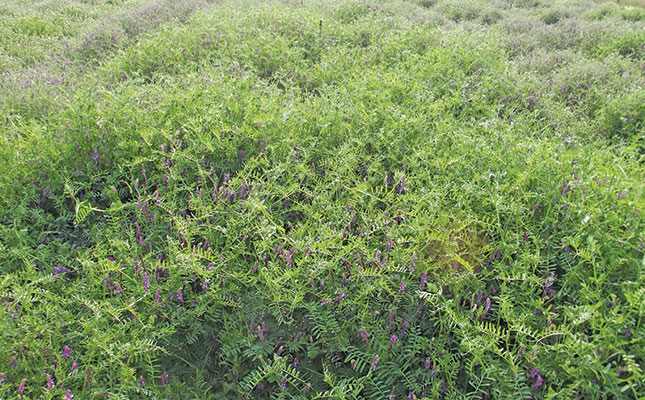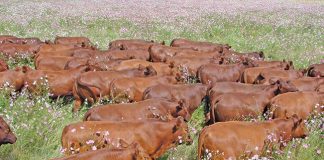
Photo: Bill Kerr
The use of cover crops makes a major difference to soil, especially under a no-till system.
Immediate access to nutrition
With no-till, you can start planting as soon as the cover crop is cut; there is no soil incorporation, hence no negative period when working the material into the soil.
Digging into the soil like this stimulates the soil organisms into a feeding frenzy and they take nitrogen and other elements into their bodies.
The plants also need these elements, but are forced to wait until the soil organisms have digested the material, died of starvation and returned the elements to the soil before they can gain access to it.
With no-till, by contrast, the material is left on the surface and decomposition takes place fairly slowly, avoiding the spike in soil organism activity. Moreover, this material on the surface, being a mulch, protects the soil from the elements and conserves moisture.
In most cases, it also greatly reduces weed growth as it restricts light on the soil surface.
Regulating the soil temperature also helps create the optimal environment for earthworms.
the value of legumes
When choosing a cover crop mixture, make sure that it includes a legume. There can be many tons of carbon in the plant material but without sufficient nitrogen present, most of the the cover crop will end up in the air as carbon dioxide rather than decomposing humus.
Nitrogen is a crucial component of humus, making up about 10% of it (carbon accounts for 50%), and few farmers really understand or appreciate this.
Legumes, with their high nitrogen content, provide excellent food for soil organisms and consequently break down much more rapidly than cereals or non-leguminous plants. If you want to have a cover on the soil for a longer period, you can combine a legume with a non-legume; the legume will decompose well ahead of the non-legume.
Oats is often used as a cover crop. It is fast-growing and can benefit soil condition, but on its own will not contribute substantially to humus build-up. One ton of residue will only have 5kg of nitrogen in it, whereas 14kg/t are required to maximise humus formation.
A legume such as grazing vetch, when mixed in with the oats, can provide the necessary nitrogen to make up the difference.
Using a non-legume as a cover crop will stimulate an increase in soil organisms as it is digested, and the soil will obviously benefit as a result, but these benefits are short-lived and the humus content of the soil will not increase.
I have been using grazing vetch as a winter cover crop for a number of years and this has transformed my soil, making production cheaper and easier.
Bill Kerr is a vegetable specialist and a breeder of a range of vegetables.











